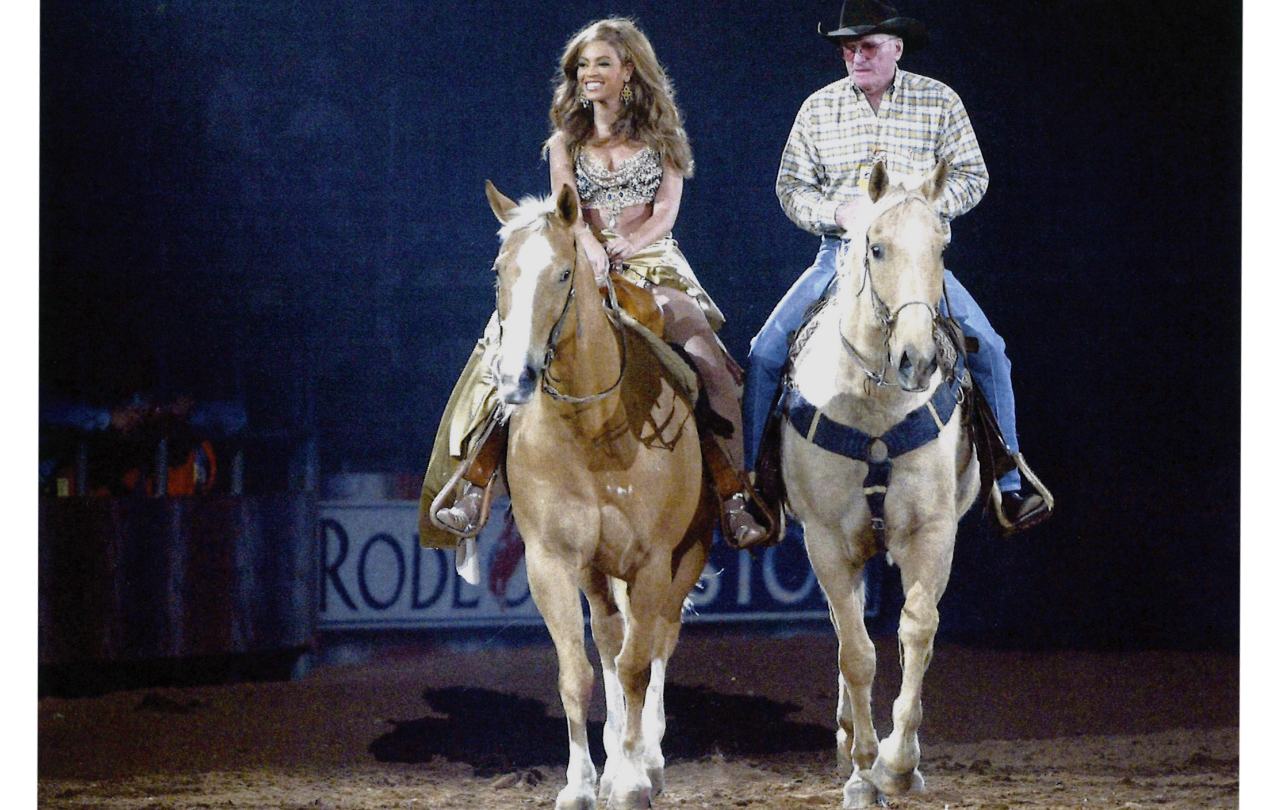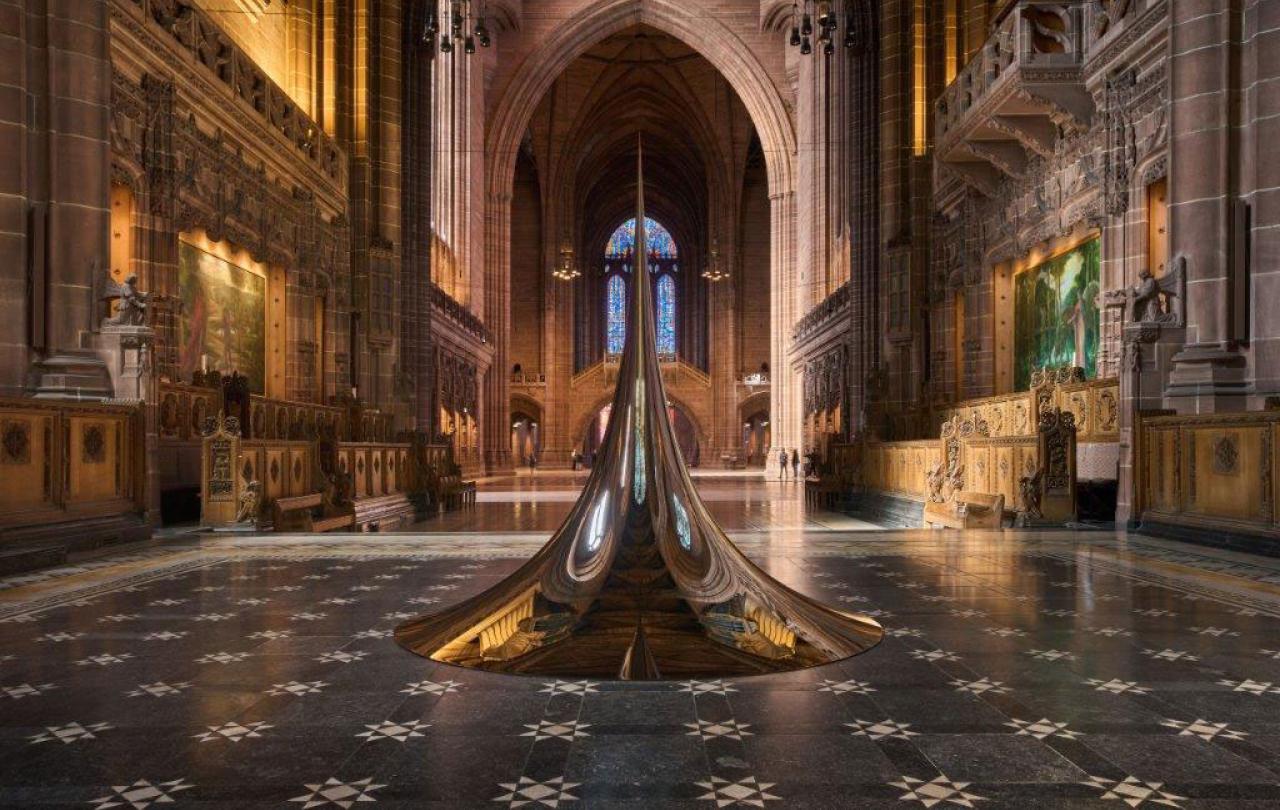
I sometimes wake up in a cold sweat with flashbacks of one terrible swimming lesson at school. I had accidentally forgotten to forget my kit, so was forced to face not only the freezing water, but the spouting of ignorant prejudice from my teacher.
“Kandiah, you’re useless,” he said, as I heaved myself out of the pool at the end of the lesson. “Although I guess it’s not your fault you can’t float like the white children. Your bones are heavier. Look at the Olympics – you never see black and Asian swimmers, do you?”
I opened and closed my mouth a few times, like the fish out of water I suppose I was, but inside I was seething.
Being told I couldn’t do something made me all the more determined to do it. Back in I jumped.
Last week, in another splash aimed at proving people wrong, Beyoncé’s magnificent album “Cowboy Carter” became the first album by a black woman to top the country charts.
On her Instagram feed she said: “the criticisms I faced when I first entered this genre forced me to propel past the limitations that were put on me.”
It was a brave move. Back in 2016, she had received heated and hate-filled reactions when she performed her song Daddy Issues at the 50th Country Music Association Awards with the country music group Chicks, formerly known as the Dixie Chicks. Many country music fans were outraged, calling it an act of cultural appropriation. One response on social media put it starkly: “SHE DOES NOT BELONG!!”.
But as a Texan who had been brought up around country music, Beyoncé disagreed. She would spend the next five years planning her response. Cowboy Carter proves her country credentials beyond all doubt. It’s not only about the music. It also does three important things that show the world what can be done when faced with barriers of prejudice and ignorance.
She honours the past
The album is clearly an act of tribute to trailblazing country artists before her. Beyoncé included notable guest appearances and feature tracks and took the unusual step of sending flowers to all who had inspired her.
Beyoncé sent flowers to Mickey Guyton, the first black female artist to be nominated for a Grammy Award in the Country category. She also sent flowers to K. Michelle and featured Tanner Adell, Brittney Spencer and Reyna Roberts on the Cowboy Carter track Blackbird, a song that Paul McCartney wrote as a response to the case of the Little Rock Nine, a group of African-American schoolchildren initially barred from attending a previously racially segregated school in Arkansas. It took the direct intervention of then President Dwight Eisenhower in 1957 to make it possible for these children to attend their school. She also included guest appearances from country music royalty Dolly Parton and Linda Martell, who both introduce songs on the album. Dolly’s introduction to Beyoncé’s reworking of Jolene is particularly poignant: “Hey Queen B it’s Dolly P”.
The song Jolene sticks faithfully to the guitar riff from the original, but the words and the tone of this song are completely different. Dolly’s original Jolene was begging another woman not to take her man from her. But Beyoncé will have none of that. She is full of threat and menace:
“I’m warnin’ you, don’t come for my man… don’t take the chance because you think you can.”
As Beyoncé pays her dues to the greats that have gone before, she also offers a very different picture. She can recognise the past, and yet not be imprisoned by it. She can appreciate those who have laid the foundations for a new era, unbound by cruel stereotypes.
She challenges the present
We don’t have to look far to see the way that western society is splintering. It is becoming harder to find common ground, harder to move from one tribe to another. Beyoncé’s album is political in that it is deliberately breaking down a wall and smashing a division. She refuses to accept that there are no-go areas for people of colour. The album feels like Beyoncé’s famous baseball bat from Lemonade, but this time it isn’t smashing cars, but preconceptions and prejudices instead.
There’s anger in this record. The first song is “American Requiem” and includes the line:
“They used to say I spoke ‘too country’./ And the reaction came,/ said I wasn’t country ’nough / If that ain’t country / I don’t know what is?”
Full of confidence and rage she asks over a bed of country music guitar chords:
“Can you hear me? / Can you stand me?”
Beyoncé does not disguise the ironies. The fresh anger and challenge weaves into classic forms and tropes of country music. The artist that some wanted to exclude from the genre tops the charts. The pop icon becomes an iconoclast. The smashing of divisions makes way for the building of something new.
She opens a door for the future
It is within living memory of many that black people were prohibited from sitting at the front of a public bus or drinking from the same water fountain as white people. Beyoncé’s Cowboy Carter is not just a smash hit it is a smash down of the boundaries of genre that had excluded her and others. With this boundary smashed the opportunity is opened for others too.
For example, there was a recent stand-out performance at the Grammy awards watched by millions around the world – the duet between the country star Luke Combs and Tracy Chapman. Luke, a young white man, is part of a new generation of country singers with a huge following. The legendary black artist Tracy Chapman recently turned 60. The joyful performance was particularly touching as the two of them looked genuinely delighted to be singing together. The video went viral and lead to a huge uplift in Chapman’s sales. The song Fast Car rocketed to the top of the charts some 36 years after it was first released.
Cowboy Carter is Beyoncé using her voice and talent to push back against prejudice and push forward to a new era. She is cracking her whip in the temple of the music industry. She is driving out those who have commandeered the space that rightly belongs to those from any and all backgrounds. She is righteously angry at the injustice. She is declaring that country music be reclaimed as a meeting place for all nations to enjoy.
When Jesus unleashed the whip against the tables of the moneychangers in the temple who were excluding the non-Jews the space rightly belonged to, he fiercely declared: “My father’s house is to be a house of prayer for all the nations.” He was not only breaking the barriers of the past but ushering in a new future, a future where everyone could gather together before God on equal footing. Jesus would eventually die on a cross to ensure this free access to God was available to everyone - wherever they were from, whatever they had done and whatever they looked like.
I welcome this album by Beyoncé in that spirit of challenging prejudices, breaking down barriers, and clearing the decks for a new future equally available to all.
If only I could have whipped myself into shape, I believe I could have been the Cowboy Carter of the swimming world forty years ago.
Beyoncé in her own words
“Ain’t got time to waste, I got art to make/ I got love to create on this holy night/ They won’t dim my light, all these years I fight.”
16 Carriages
“Say a prayer for what has been / We'll be the ones that purify our father's sins / American Requiem / Them old ideas (yeah) / Are buried here (yeah) / Amen (amen)
Amen





